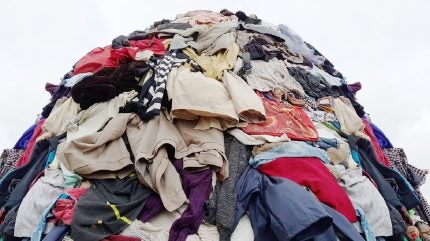
The creation of this database comes as a response to the escalating trend of discarding used clothing into landfills, which is often seen as a more cost-effective alternative to recycling.
A study from the Environmental Protection Agency (EPA) in 2018 revealed that 85% of discarded textiles were relegated to landfills or incineration plants. The recycling rate for all textiles was 14.7% during the year, with a total of 2.5m tons recycled.
NIST material research engineer Amanda Forster said: “This reference data will help improve sorting algorithms and unlock the potential for high-throughput sorting, which requires less manual labour.”
The database has been developed by a team led by NIST research chemist Katarina Goodge and is available freely for download at the NIST Public Data Repository.
The escalation of textile waste is partly attributed to the prevalence of fast fashion, which produces high volumes of affordable, style-centric apparel that consumers quickly dispose of. Challenges in recycling also arise from the introduction of new and blended fabrics, along with often inaccurate labelling practices.
Sorting at recycling centres typically involves manual labour where workers use devices emitting near-infrared light to analyse fabrics. This light interaction with the fabric generates a distinct pattern akin to a fingerprint, identifying fibre types through near-infrared (NIR) spectroscopy.

US Tariffs are shifting - will you react or anticipate?
Don’t let policy changes catch you off guard. Stay proactive with real-time data and expert analysis.
By GlobalDataAlthough this method can be mechanised on conveyor belts, it still heavily relies on human intervention.
Recycling machinery producers are now integrating machine learning and artificial intelligence to enhance their sorting processes. These advanced algorithms require access to precise reference data for training purposes.
The NIST’s Near-Infrared Spectra of Origin-defined and Real-world Textiles (NIR-SORT) database addresses this need by offering NIR spectral patterns for 64 fabric types, including pure fibres like cotton and polyester, blends such as those containing spandex, and actual garments sourced from secondhand stores.
NIR scanner developers can use this resource to refine their algorithms and boost equipment efficiency.
Katarina Goodge said: “The difficulty comes in when fibres are similar, like cotton or hemp. That means that the near-infrared signal is similar. The same is true with a cotton and polyester blend. Is this a new fibre or a blend of two or more fibres?
“AI can help make the decision-making process more accurate.”
Given NIST’s role as a leading measurement authority, it has contributed high-fidelity spectra to the database, aiming to reduce misidentification errors and increase recycling rates.
This initiative is part of NIST’s broader Circular Economy Program efforts, which were highlighted in a report recommending improved technologies for textile identification and sorting.
The programme focuses on developing measurement science that promotes material sustainability through reuse, repair, and recycling, prioritising these over disposal.



